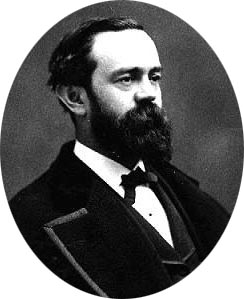The International Astronomical Union announced recently that public input will be considered when names are assigned to “planetary satellites, newly discovered planets, and their host stars.” These public names will be distinct from the scientific designations, which I gather will follow the rules they always have. This seems as good a time as any to look briefly into the pleasures of astronomical nomenclature.
It seems to me that astronomical objects have a particularly complex and engaging nomenclature, but that may be just because my background is in astronomy. Stars and other objects may have more than one name (even if we stick to English rather than considering the names given in other cultures), and the brighter stars typically have multiple designations. Consider the star Vega. It’s a relatively nearby and bright star that appears as part of the summer triangle, a group of three stars forming a huge triangle that’s visible from early summer until well into the autumn.
It’s also called α Lyrae, which indicates that it’s the brighest star in the constellation Lyra. This name follows the system Johann Bayer set up early in the 17th century, in which the stars in a constellation are designated by Greek letters, from the brightest to the dimmest. Once people started taking a good look with telescopes, of course, they found far more stars than the Greek alphabet could cover, so other systems came into use, for example, Flamsteed numbers, from a catalog published by John Flamsteed in 1725. In this system, Vega is 3 Lyrae. So already that’s three names for Vega.
When I was an undergrad taking an observational astronomy class, one of our early exercises was to observe various astronomical objects identified by sometimes cryptic designators; the point was to familiarize us with the catalogs and other tools used by astronomers, as well as with the telescope. One of the objects we were asked to observe was HD 172167, which turned out, when the proper source was consulted, to be none other than our old friend Vega. In fact, this familiar star actually has 55 different monikers, most of them numbers in catalogs.
You’ll notice a certain creeping abstraction here. Vega is an interesting name with a history of its own (which we will probably go into another time). Lyra is a constellation with a tragic myth behind it. In this they resemble many astronomical objects, which are rich in legend and lore. Dubhe and Merak, the Guardians of the Pole; Algol (the ghoul); Antares, the rival of Mars; the Beehive Cluster; the Seven Sisters: They might almost be the titles of fairy tales or science fiction stories. But HD 172167? SAO 67174? HIP91262? Where did the romance go?

Actually, these seemingly opaque designators have a wealth of history and lore behind them too. An HD number, for example, indicates a listing in the Henry Draper catalog. Draper was a doctor and an accomplished amateur astronomer who clearly saw the potential of one of the new technologies of the time, photography. He made the first photograph of the spectrum of a star (Vega, no doubt chosen because it’s so bright). He was also the first to photograph a nebula (the Orion Nebula). His wife, born Anna Mary Palmer, assisted him with his astronomical work, and when he died, in 1882 at the age of 45, she established a memorial in his name to fund further astronomical research based on photography and spectroscopy.
The memorial funded a gigantic project at Harvard College Observatory: classifying stars according to their spectra. Edward Pickering led the project, in which many women participated. For example, Annie Jump Cannon performed the astonishing task of looking at well over a quarter of a million stellar spectra and assigning each star to its proper type. The system of stellar types that we now know, in which stars are classed as O, B, A, F, G, K, or M according to their temperature, from the hottest to the coolest, was still being developed, and Cannon helped resolve a disagreement between two competing systems. Overall, her work was a massive achievement.

Stars are, of course, only one kind of heavenly body. There are various types of nebulae, star clusters, and galaxies, each with a naming system and catalogs tabulating the cosmic inventory. As we look more closely at our own solar system, we’re finding smaller and more distant objects to both classify and identify by individual names. I hope to get into more of this in future posts.
For now it’s enough to say that the story is the same for them as it is for the stars: they have the equivalent of common names, like the Orion Nebula, and various official designations. Each drily abstract catalog number, from the more or less familiar Messier numbers that identify 100+ faint fuzzy objects, to the New General Catalog (NGC), which lists a much larger group of non-stellar objects, to the most specialized catalogs of heavenly bodies—each of these represents years of careful human labor, many resources, and many observations. Many human stories. I’m glad that the human touch is being added to the naming of extrasolar planets. But I also love the names we have now, which are often monuments to human dedication and imagination.
Learn more:
- Since I originally published this post, Dava Sobel has written a wonderful book about the women of Harvard College Observatory who worked on stellar classification: The Glass Universe: How the Ladies of the Harvard Observatory Took the Measure of the Stars (find in library).
- The IAU’s Naming Astronomical Objects page (which, I am amused to note, begins “Celestial nomenclature has long been a controversial topic.”)
- If you want to see a listing of all 55 of Vega’s identifiers, here’s the basic information for Vega in the SIMBAD Astronomical Database.
- The Classification of Stellar Spectra, by Jesse Allen (University College London site) gives a good overview. Wikipedia’s Stellar classification page is quite thorough and has some nice graphics.